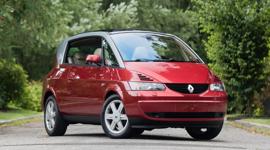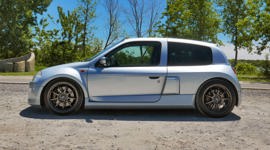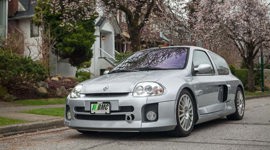It's a French hot hatch with a rally history. It has a turbocharged four-cylinder engine; in the back. It's a piece of 1980s craziness. It's the Renault 5 Turbo. And it's our autoTRADER.ca Find of the Week.
The late 1970s and early 1980s were the heydays of the World Rally Championship. Cars were becoming ever madder. It started with the Lancia Stratos and just got more and more intense until the massively overpowered Group B cars brought it all to a tumbling halt in 1986.
Renault's last WRC success was in 1973 with the Alpine-Renault A110. In 1977, the automaker began preparing for a comeback. But with their motorsports budget largely used up by Formula 1 spending, Renault's rally car effort needed to be based on something a little more pedestrian than the Ferrari-engined Stratos.
Renault's VP of Production Jean Terramorsi set out the requirements for the new car. It needed to be based on an existing car, be small, light and nimble, and need only small changes to go from street to race ready. The latter was because the series rules required 400 street cars to be sold to homologate the rally car.
Fortunately, Renault had a hot hatchback in their stable. Arguably the first hot hatch, the Renault 5 Alpine. And if you're not familiar with the R5 name, that's because you probably know it by its North American name: the Le Car. The 5 had some WRC podiums in basically stock form, but something better was needed. The front-drive layout wasn't up to the challenges of World Rally.
A radically reworked Renault 5 was the answer. The engine was moved from the front to the middle. Driving the rear wheels, and sitting where your groceries would normally go.
The plan was for a new spaceframe chassis, but it was overly complex and the costs were too high. The simple solution: cut a hole in the floor and stick the engine in there. Oh, and build a tubular subframe to hold it.
Up front, the suspension was largely the original layout. In the rear, the double-wishbone suspension from the Alpine-Renault A310 was fitted.
Now the engineers needed an engine. Renault pioneered the turbo era of Formula 1 in 1977, so they had expertise with forced induction. Adding boost to the A110's 1.6L four was the preferred choice, but that would bump the car a class higher than the company thought it could handle. So the 1.4L engine from the Renault 5 Alpine had a great big turbo strapped on.
That engine made 158 hp and 163 lb-ft of torque. Rally-ready versions pushed that figure to well over 300 hp. In a car that weighed 970 kg.
More grip was needed to handle the extra power. But the 5 was designed to fit tiny hatchback tires. 135 mm wide, on a 13-inch wheel. Bigger rubber wouldn't fit. The solution was massive rear fender flares. Enough to bump the rear arches out 225 mm. Which is, appropriately, the width of tire that the car could now fit.
It's those huge flares that make the Renault 5 Turbo instantly recognizable. In addition to the wider tires, the flares housed intakes for the engine and radiators. It might have looked silly, but it could hit 100 km/h in seven seconds, and run to over 200 km/h. And it handled like a go-kart.
The plan was to make 400. Just enough to make the car race legal. Customer demand was overwhelming, and the factory built 1,820 units in the first three years.
And they wanted to build more. So they introduced a revised version for 1983 that reduced costs and made it easier to build. The originals used aluminum for the roof, doors, and hatch. The Turbo 2 switched those to steel.
The important parts were the same, though, and the company tripled sales the first year. Just over 5,000 were built between both generations, but the Turbo 2 is the most common. And despite the slightly higher weight, performance was the same.
They were never officially sold in North America, so the car remains rare on our roads. But we've found one, for sale in Vancouver. And this 1984 Renault 5 Turbo 2 could be yours.
This car was originally purchased in Germany and had all of the factory options fitted. That means air conditioning, power windows, a rear wiper, and the Turbo 2 sticker package.
It has just 73,850 km on the odometer and has recently seen extensive service. That includes an aluminum radiator, rebuilt fuel injection system, new shocks, a new exhaust, and a general refresh. It has new carpets, and even the seats have gotten new upholstery.
It has period-correct Michelin TRX tires. Those required a special metric-sized wheel, and having those tires means that this Turbo 2 has the original alloys.
This Renault 5 Turbo 2 is a striking example of everything that was great about 1980s sports and racing cars. Early turbocharger with big lag? Check. Big flares with oddball tires? Check. Manual gearbox and no driver aids? Check. And an interior that is very much brown? That's a big check. It's a collectable classic you can put in your driveway. Sideways.





















































